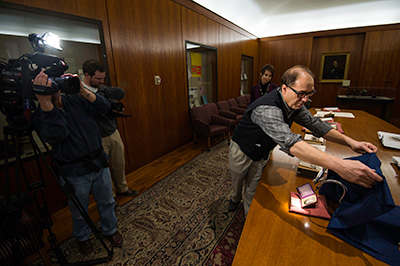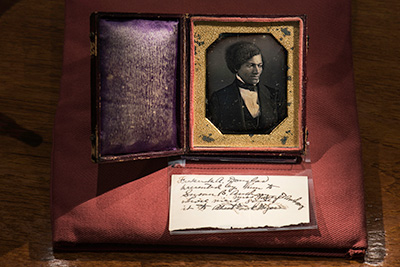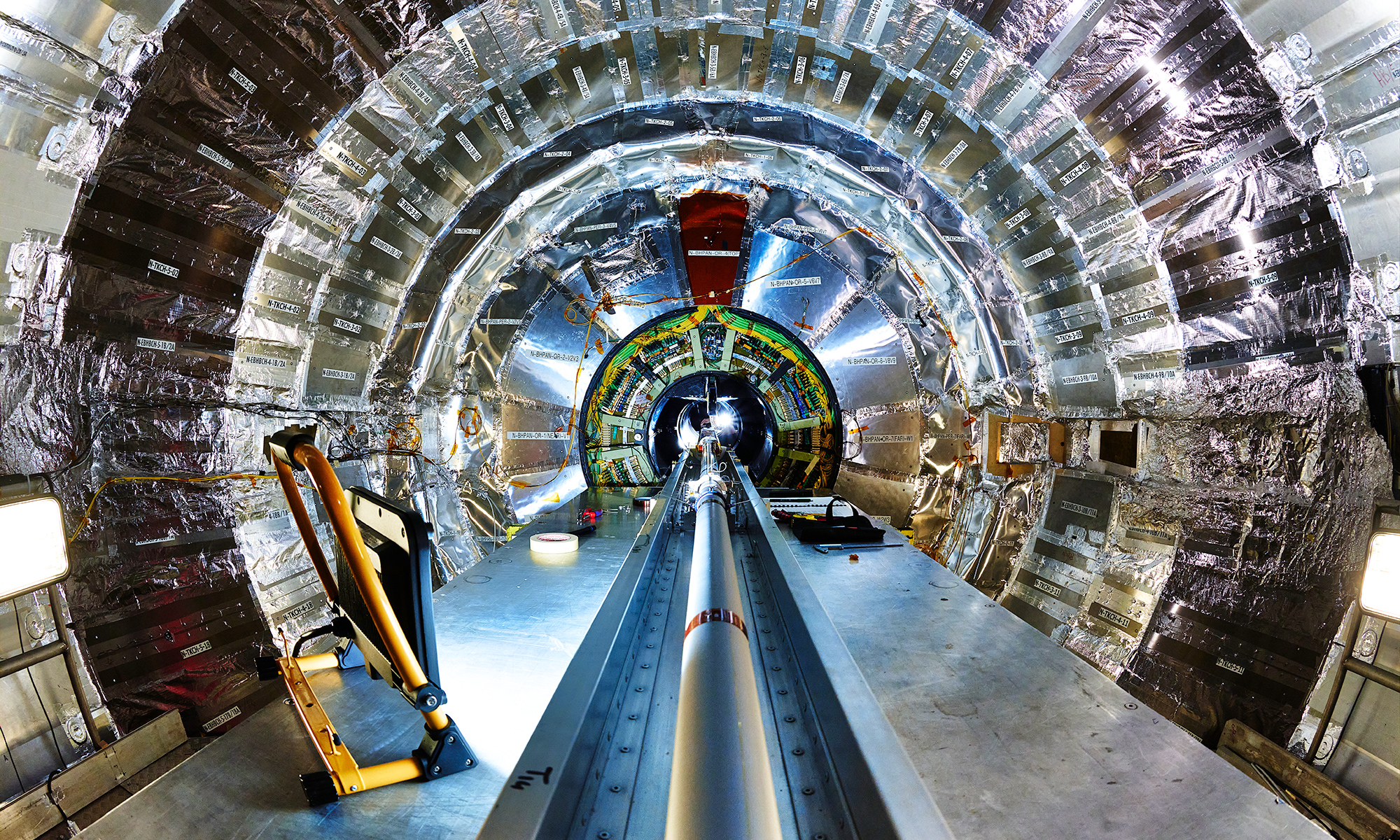Late last week, University of Rochester researchers returned to the River Campus from the Chester County Historical Society in West Chester, Pennsylvania. With them they brought one of the earliest known images of abolitionist Frederick Douglass, the most photographed American of the 19th century.
Only this wasn’t any photograph; it was a daguerreotype, the world’s first successful photographic medium. Roughly the size of a standard playing card, the daguerreotype of Douglass is remarkably well preserved and shows him in semi-profile.

Of the nine known surviving daguerreotypes of Douglass, the earliest were allegedly taken in 1841 and 1843. According to notes from Albert Cook Myers, a Pennsylvanian historian, this 1848 portrait was a gift from Douglass to social reformer Susan B. Anthony. Anthony’s niece Lucy then gave it to Myers. Today it is part of the Albert Cook Myers Collection at the Chester County Historical Society.
Some recently published research indicates this image might have been taken in New York City in May 1848. This was just five months after Douglass’ move to Rochester to begin publishing his abolitionist newspaper The North Star. It was also only two months before the Seneca Falls Convention for women’s rights, where Douglass was one of the few men in attendance.
The iconic daguerreotype is on display in the Rush Rhees Library’s Plutzik Room through February 29, 2016, along with a related exhibition titled Researching the Daguerreotype at the University of Rochester. The exhibition—set up in the library entrance—explores the history, process, impact, and University-related research efforts surrounding the daguerreotype.
“During the period of hosting this daguerreotype, that will be celebrated as a homecoming, we hope to learn and validate its history as well as contribute to the long-term preservation of this national treasure,” says Ralph Wiegandt, a visiting research scientist and conservator at the University.
Wiegandt works closely with Professor of Physics Nicholas Bigelow on researching the nanoscience of daguerreotypes. As Bigelow explains, “The opportunity to use the powerful nano science tools of the University nano center and our extensive experience to study the object offers us a unique opportunity to contribute to understanding who made the image and when, and to ensure its conservation for generations to come.”

In applying spectroscopy, digital scanning, and forensic analysis, the researchers aim to further historical knowledge while aiding conservation efforts. For example, this particular daguerreotype could provide a baseline to use when analyzing other daguerreotypes that were made at the same time, by the same person, or using the same process.
“The point of our work is, we hope, to help corroborate what the historical record says,” explains Wiegandt. “But first we have to do the work.”
Interested in learning more? Join University researchers for a special event:
Presentation: Scientific Advances Surrounding Daguerreotype
Monday, December 14
7-8 p.m.
Free and open to the public, with parking available in Library Lot.




